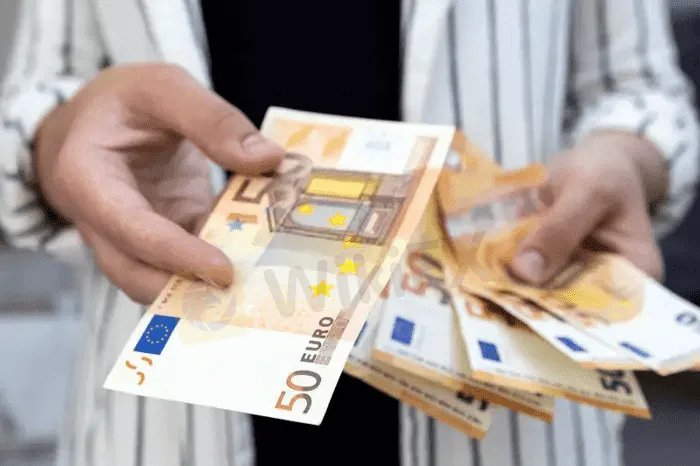简体中文
繁體中文
English
Pусский
日本語
ภาษาไทย
Tiếng Việt
Bahasa Indonesia
Español
हिन्दी
Filippiiniläinen
Français
Deutsch
Português
Türkçe
한국어
العربية
Dollar marches higher, euro teeters on brink of parity
Abstract:The U.S. dollar hit a fresh two-decade peak versus major peers on Tuesday, hoisted by safety bids and expectations of further aggressive rate hikes by the Federal Reserve, while the euro was pinned close to a 20-year low near parity to the greenback.

The dollar index, a measure against six counterparts, with the euro most heavily weighted, was 0.25% higher at 108.43. It had earlier climbed to 108.47, its highest since October 2002.
“Haven demand for USD, coupled with an upside surprise in last Fridays payrolls release, likely contributed to the latest bout of dollar strength,” said analysts at Maybank.
That dollar bullishness was showcased across much of the currency markets, with the euro falling as low as $1.0006 on Tuesday, the weakest since December 2002. It last changed hands down 0.29% at $1.0013.
Sterling was similarly down 0.25% to $1.18645, after earlier sinking to a fresh two-year low at $1.186.
“EUR depreciation of late appears to have been largely driven by the market reassessing the potential for a more significant growth downturn in the Euro area, amplified by energy woes, war dragging on longer than expected and doubts over ECBs anti-fragmentation tool,” the Maybank analysts said.
The biggest single pipeline carrying Russian gas to Germany, the Nord Stream 1 pipeline, began annual maintenance on Monday, with flows expected to stop for 10 days.
Governments, markets and companies are worried Russia might extend the shutdown because of the war in Ukraine, exacerbating the continents energy supply crunch and potentially speeding a recession.
“All eyes will just be on whether Russian gas flows will return via the Nord Stream 1 pipeline following the end of maintenance next week,” said Carol Kong, a currency strategist at Commonwealth Bank of Australia.
“But in the meantime, I think concerns about a potential shut off of Russian gas flows will continue to keep the euro/ dollar heavy and that would in turn mean the dollar will keep strengthening.”
Euro weakness has been a big part of the dollar indexs push higher, with the safe-haven U.S. currency also supported by worries about growth elsewhere too, with China in particular implementing strict zero-COVID policies to contain fresh outbreaks.
Arguably the biggest factor in the dollars rise, however, is the view the Fed will hike rates faster and further than peers.
The Fed is expected to lift rates by 75 basis points for a second straight time at its July 26-27 meeting. Fed funds futures are pricing for its benchmark rates to rise to 3.50% by March, from 1.58% currently.
Investors are keenly watching U.S. consumer price data due on Wednesday, with economists polled by Reuters expecting the index to print an 8.8% annual rate for June.
Elsewhere, the dollar edged 0.09% lower to 137.28 yen, following Mondays jump to a fresh 24-year high at 137.75.
The Philippine peso declined as much as 0.59% to its lowest since September 2005 at 56.38 per dollar. And the South Korean won slipped to its lowest level since April 2009 at 1,315.2 per dollar
The Australian dollar gave up 0.22% to $0.6728, and earlier matched the two-year low of $0.6716 reached on Monday amid a commodity price drop and fresh Chinese COVID curbs.

Disclaimer:
The views in this article only represent the author's personal views, and do not constitute investment advice on this platform. This platform does not guarantee the accuracy, completeness and timeliness of the information in the article, and will not be liable for any loss caused by the use of or reliance on the information in the article.
Read more

WikiEXPO Dubai 2024 will take place soon!
2 Days Left!

Italian Regulator Warns Against 5 Websites
The Italian regulator, CONSOB has issued a warning against five websites offering unauthorized financial services. This regulatory action aims to protect the public from fraudulent activities.

WikiEXPO Dubai 2024 is coming soon
3 Days Left!

Trader Exposes Unethical Practices by STP Trading
A recent allegation against STP Trading has cast doubt on the firm's business practices, highlighting the potential risks faced by retail traders in an increasingly crowded and competitive market.
WikiFX Broker
Latest News
What Makes Cross-Border Payments Easier Than Ever?
Trader Exposes Unethical Practices by STP Trading
Italian Regulator Warns Against 5 Websites
Currency Calculator


